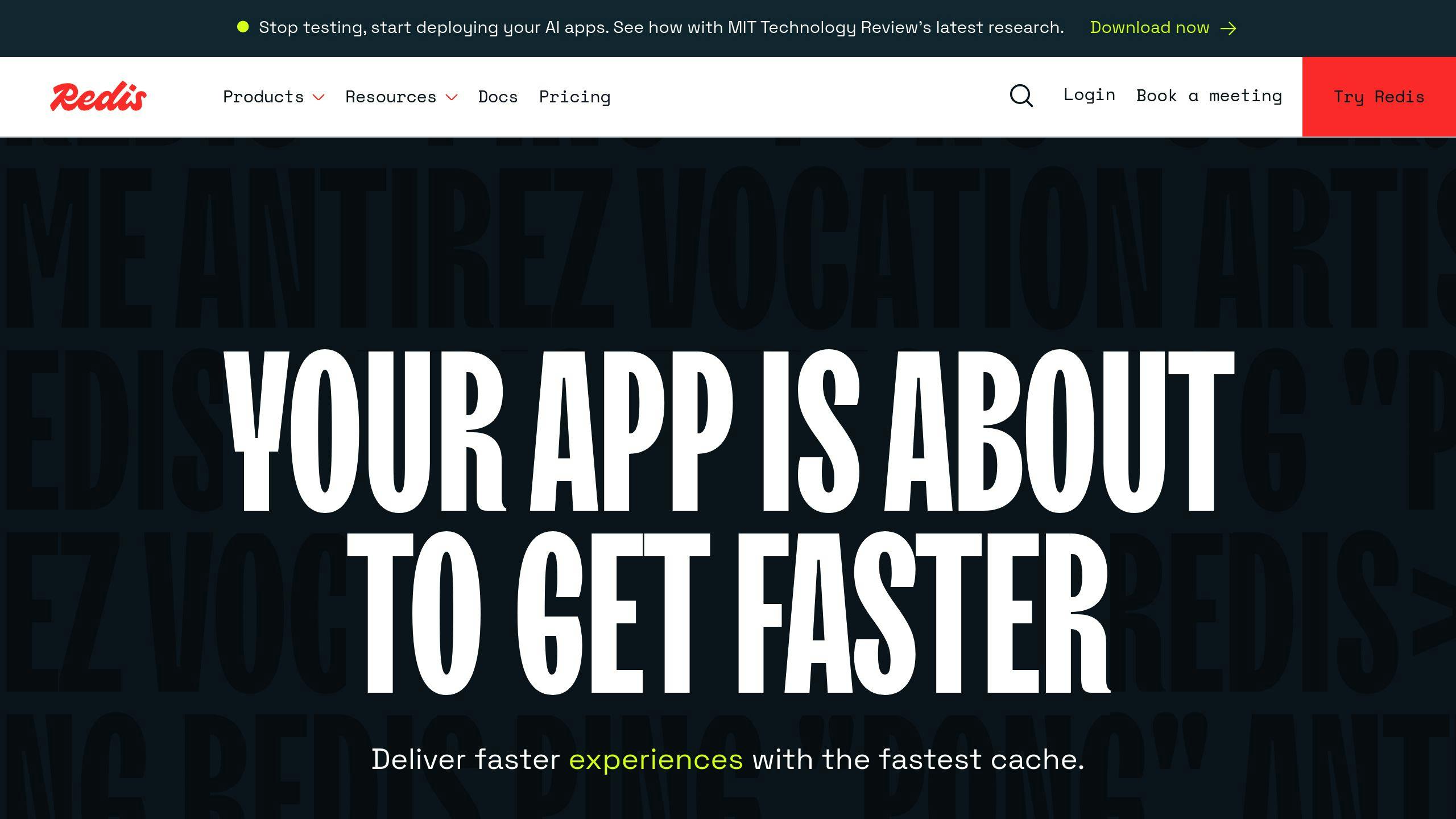Caching is a crucial technique in Next.js that significantly improves page load times, reduces server load, and enhances user experience. This article explores the different caching mechanisms in Next.js, including Server-Side Rendering (SSR), Static Site Generation (SSG), and Client-Side Caching.
Key Caching Layers
| Caching Layer | Description |
|---|---|
| Service Workers | Enable offline browsing, background sync, and intercepting network requests |
| Browser Caching | Stores static assets like CSS files, JavaScript bundles, and images |
| Server Caching | Remembers previously rendered pages or API results on the server |
| Client-Side Caching with SWR | Caches data on the client-side, allowing for quick retrieval and display |
By leveraging these caching layers effectively, you can:
- Reduce server load and improve scalability
- Enhance user experience with faster page load times
- Improve SEO performance through faster rendering of static pages
Caching Strategies
| Strategy | Advantages | Disadvantages |
|---|---|---|
| Server-Side Rendering (SSR) | Fast page loads, SEO-friendly, dynamic content support | Higher server load, slower page loads for uncached pages |
| Static Generation (SG) | Fast page loads, low server load, SEO-friendly | Limited dynamic content support, slower build times |
| Incremental Static Regeneration (ISR) | Fast page loads, low server load, dynamic content support | Slower build times, complex implementation |
| Client-Side Caching with SWR | Fast page loads, dynamic content support, low server load | Higher client-side load, complex implementation |
The article provides detailed guidance on implementing these caching strategies, monitoring cache performance, and ensuring effective cache invalidation. Real-world code examples demonstrate server-side caching techniques using getServerSideProps, getStaticProps, and data fetching with getStaticPaths.
By understanding and implementing the appropriate caching strategies, developers can create high-performance Next.js applications that deliver exceptional user experiences.
Caching Layers in Next.js

Next.js provides multiple caching layers to optimize application performance. These layers work together to reduce server load, improve page load times, and enhance user experience.
Service Workers
Service workers, introduced in Next.js 14, enable offline browsing, background sync, and intercepting network requests. They serve content from the cache first, making them a central player in enhancing application reliability and speed.
Browser Caching
Browser caching stores static assets like CSS files, JavaScript bundles, and images. This layer is straightforward yet powerful, and its proper exploitation can yield immediate performance gains for end-users.
Server Caching
Server caching in Next.js capitalizes on the server's capacity to remember previously rendered pages or API results. This creates a reservoir of ready-to-use data, which is particularly beneficial for high-traffic applications.
Client-Side Caching with SWR

The Stale-While-Revalidate (SWR) library is a popular choice for client-side caching in Next.js applications. SWR caches data on the client-side, allowing for quick retrieval and display. If the data is stale, SWR makes a background request to get fresh data and then updates the cache and UI accordingly.
Caching Layers Overview
| Layer | Description |
|---|---|
| Service Workers | Enable offline browsing, background sync, and intercepting network requests |
| Browser Caching | Stores static assets like CSS files, JavaScript bundles, and images |
| Server Caching | Remembers previously rendered pages or API results on the server |
| Client-Side Caching with SWR | Caches data on the client-side, allowing for quick retrieval and display |
Understanding how these caching layers interact and collaborate is crucial to architecting them effectively. By leveraging these caching layers, you can significantly improve your Next.js application's performance, reduce server load, and enhance user experience. In the next section, we'll explore Server-Side Rendering (SSR) caching in more detail.
Server-Side Rendering (SSR) Caching
Server-Side Rendering (SSR) caching is a crucial aspect of Next.js performance optimization. By caching server-rendered pages, you can reduce the load on your server, improve page load times, and enhance user experience.
Caching with getServerSideProps
You can cache SSR pages in Next.js using the getServerSideProps function. This function allows you to fetch data on the server-side and pre-render pages with the fetched data. To enable caching, you can implement a custom caching layer using a Map data structure.
Here's an example implementation:
const ssrCache = new Map();
export async function getServerSideProps(context) {
const { req } = context;
const cacheKey = req.url;
// Check if we have cached the page
if (ssrCache.has(cacheKey)) {
// Retrieve the page from cache
return ssrCache.get(cacheKey);
}
const data = await fetchData(); // Your data fetching logic here
const pageProps = { props: { data } };
// Cache the page
ssrCache.set(cacheKey, pageProps);
// Set a cache timeout to invalidate
setTimeout(() => ssrCache.delete(cacheKey), 1000 * 60 * 5); // Cache for 5 minutes
// Return the page props
return pageProps;
}
This implementation caches pages for 5 minutes, but you can adjust the timeout according to your application's needs.
Page-Level Caching
Next.js also provides built-in support for page-level caching using the revalidate option in getServerSideProps. This option specifies the time (in seconds) for revalidation.
Here's an example:
| Option | Description |
|---|---|
revalidate |
Specifies the time (in seconds) for revalidation |
By leveraging these caching strategies, you can optimize the performance of your Next.js application and provide a better user experience.
In the next section, we'll explore Static Generation and Incremental Static Regeneration, another crucial aspect of Next.js caching.
Static Generation and Incremental Static Regeneration
Static Generation (SG) and Incremental Static Regeneration (ISR) are two powerful caching strategies in Next.js that allow you to optimize the performance of your application by pre-rendering pages at build time. In this section, we'll explore the benefits and implementation of SG and ISR.
Benefits of Static Generation
Static Generation offers several benefits:
- Fast page loads: Pre-rendered HTML files can be cached and served by a global CDN, resulting in fast page loads.
- Always online: Even if your backend or data source goes down, your existing pre-rendered page will still be available.
- Minimized backend load: With Static Generation, the database or API wouldn't need to be hit on every request, reducing the load on your backend.
Implementing Static Generation
To implement Static Generation in Next.js, you can use the getStaticProps function. This function allows you to fetch data at build time and pre-render pages with the fetched data.
Here's an example implementation:
export async function getStaticProps() {
const res = await fetch('https://.../posts')
const posts = await res.json()
return {
props: {
posts,
},
}
}
Incremental Static Regeneration
Incremental Static Regeneration (ISR) takes Static Generation to the next level by allowing you to update static pages after deployment. This approach enables you to balance performance and content freshness.
ISR allows you to specify a revalidate period in getStaticProps, which dictates after how many seconds Next.js should attempt to regenerate the page.
Here's an example implementation:
export async function getStaticProps() {
const res = await fetch('https://.../posts')
const posts = await res.json()
return {
props: {
posts,
},
revalidate: 10, // Time in seconds to revalidate the page
}
}
By leveraging SG and ISR, you can optimize the performance of your Next.js application and provide a better user experience.
In the next section, we'll explore Client-Side Caching with SWR, another crucial aspect of Next.js caching.
Client-Side Caching with SWR
Client-side caching is a crucial aspect of optimizing the performance of your Next.js application. One popular library for achieving this is SWR (Stale-While-Revalidate), which provides a simple and efficient way to cache data on the client-side.
What is SWR?
SWR is a React Hooks library that allows you to fetch data and cache it on the client-side. It's designed to work seamlessly with Next.js and provides a simple API for caching and revalidating data.
How does SWR work?
When you use SWR to fetch data, it first checks the cache to see if the data is already available. If it is, SWR returns the cached data immediately. If not, SWR sends a request to the server to fetch the data and then caches the response. This approach ensures that your application is always displaying the most up-to-date data while minimizing the number of requests to the server.
Benefits of using SWR
Using SWR in your Next.js application provides several benefits:
| Benefit | Description |
|---|---|
| Improved performance | By caching data on the client-side, SWR reduces the number of requests to the server, resulting in faster page loads and improved overall performance. |
| Simplified data fetching | SWR provides a simple and intuitive API for fetching and caching data, making it easy to manage data in your application. |
| Automatic revalidation | SWR automatically revalidates cached data in the background, ensuring that your application always displays the most up-to-date information. |
Implementing SWR in Next.js
To use SWR in your Next.js application, you'll need to install the swr package and import the useSWR hook in your component file. Here's an example implementation:
import useSWR from 'swr';
function Profile() {
const { data, error } = useSWR('/api/user', fetcher);
if (error) return <div>Failed to load</div>;
if (!data) return <div>Loading...</div>;
return <div>Hello {data.name}!</div>;
}
In this example, the useSWR hook is used to fetch data from the /api/user endpoint and cache it on the client-side. The fetcher function is used to specify how to fetch the data.
By leveraging SWR in your Next.js application, you can optimize the performance of your application and provide a better user experience. In the next section, we'll explore custom caching strategies and how to implement them in your application.
sbb-itb-5683811
Custom Caching Strategies
Custom caching strategies are crucial for optimizing the performance of your Next.js application. By implementing a tailored caching approach, you can reduce the load on your server, improve page load times, and enhance the overall user experience.
Extending Next.js with Custom Caching
Next.js allows you to extend its caching capabilities by implementing custom cache management strategies. You can achieve this by using caching libraries like react-query or by creating a custom caching solution tailored to your application's specific needs.
Advanced Use Cases
Custom caching strategies can be used to address advanced use cases, such as:
| Use Case | Description |
|---|---|
| Global Data Store | Implement a centralized data storage mechanism to efficiently share data across your application. |
| Cache Invalidation | Develop a fine-tuned cache invalidation strategy to ensure that your application serves up-to-date data. |
Choosing the Right Strategy
When selecting a custom caching strategy, consider the following factors:
| Factor | Description |
|---|---|
| Data Freshness Requirements | Determine how often your data needs to be updated and choose a strategy that balances freshness with performance. |
| Performance Impact | Evaluate the impact of your caching strategy on server resources and page load times. |
| Complexity | Select a strategy that aligns with your application's complexity and development requirements. |
By implementing a custom caching strategy, you can unlock the full potential of your Next.js application and provide a seamless user experience. In the next section, we'll explore third-party caching services and how to integrate them into your application.
Third-Party Caching Services
Third-party caching services can significantly improve the performance and scalability of your Next.js application. By integrating these services, you can offload caching responsibilities, reduce server load, and improve page load times.
Redis Caching

Redis is a popular in-memory data store that can be used as a caching layer for your Next.js application. By using Redis, you can cache frequently accessed data, reducing the load on your server and improving response times.
Here's an example of how you can use Redis to cache data in a Next.js API endpoint:
import Redis from 'ioredis';
const redis = new Redis();
export default async function handler(req, res) {
const key = 'my-cache-key';
const cachedData = await redis.get(key);
if (cachedData) {
return res.send(cachedData);
}
const data = await fetchDataFromDatabase();
await redis.set(key, JSON.stringify(data), 'EX', 60); // cache for 1 minute
return res.send(data);
}
Other Third-Party Caching Services
In addition to Redis, there are several other third-party caching services that can be integrated with Next.js, including:
| Service | Description |
|---|---|
| Vercel Edge Network | A global edge network that provides caching, SSL encryption, and DDoS protection. |
| Cloudflare | A content delivery network (CDN) that provides caching, security, and performance optimization. |
| Fastly | A CDN that provides caching, security, and performance optimization. |
When selecting a third-party caching service, consider the following factors:
| Factor | Description |
|---|---|
| Performance | Evaluate the service's caching performance and impact on page load times. |
| Scalability | Consider the service's ability to handle high traffic and large datasets. |
| Security | Evaluate the service's security features, such as SSL encryption and DDoS protection. |
| Integration | Assess the ease of integration with your Next.js application. |
By integrating a third-party caching service, you can improve the performance and scalability of your Next.js application and provide a better user experience. In the next section, we'll explore monitoring and cache invalidation strategies to ensure your caching implementation is effective and efficient.
Monitoring and Cache Invalidation
To ensure your Next.js application provides a fast and reliable user experience, it's crucial to monitor cache performance and implement effective cache invalidation strategies.
Monitoring Cache Performance
Monitor key metrics to optimize cache performance:
| Metric | Description |
|---|---|
| Cache hit rate | The percentage of requests served from the cache. |
| Response times | The time it takes for the cache to respond to requests. |
| Cache size | The total size of the cache, which impacts performance and storage costs. |
Next.js provides built-in support for monitoring cache performance using the next/cache module. You can also use third-party libraries like react-query or swr.
Cache Invalidation Strategies
Implement cache invalidation to ensure users receive the latest content:
| Strategy | Description |
|---|---|
| Time-based invalidation | Set a time-to-live (TTL) for cached data, after which it is automatically invalidated. |
| On-demand invalidation | Invalidate cached data when a specific event occurs, such as a database update. |
| Cache tags | Use cache tags to invalidate specific cached data based on a unique identifier. |
Next.js provides built-in support for cache invalidation using the revalidate option in getStaticProps and getServerSideProps. You can also use third-party libraries like react-query or swr.
Common Pitfalls and Solutions
Avoid common pitfalls when implementing caching and cache invalidation:
| Pitfall | Solution |
|---|---|
| Overly aggressive caching | Implement a careful cache-control policy that balances performance benefits with the necessity of serving fresh data. |
| Ignoring cache invalidation | Implement automatic invalidation triggers alongside mutation operations to ensure cached data is updated accordingly. |
| Neglecting cache sizes | Regularly monitor cache sizes and implement strategies to cache only the most vital parts of the application. |
By following these best practices for monitoring cache performance and cache invalidation, you can ensure your Next.js application provides a fast and reliable user experience.
Comparing Caching Strategies
Choosing the Right Approach for Your Next.js Application
When it comes to caching in Next.js, there are several strategies to choose from. Each strategy has its advantages and disadvantages. In this section, we'll compare the different caching strategies to help you make an informed decision.
Caching Strategy Comparison
| Strategy | Advantages | Disadvantages |
|---|---|---|
| Server-Side Rendering (SSR) | Fast page loads, SEO-friendly, dynamic content support | Higher server load, slower page loads for uncached pages |
| Static Generation (SG) | Fast page loads, low server load, SEO-friendly | Limited dynamic content support, slower build times |
| Incremental Static Regeneration (ISR) | Fast page loads, low server load, dynamic content support | Slower build times, complex implementation |
| Client-Side Caching with SWR | Fast page loads, dynamic content support, low server load | Higher client-side load, complex implementation |
This comparison table highlights the key benefits and drawbacks of each caching strategy, helping you select the most suitable approach for your Next.js application.
Real-World Examples
Code Samples for Server-side Caching in NEXT.js
Let's explore some code samples that demonstrate the implementation of various server-side caching techniques in NEXT.js.
Page Level Caching Example
Here's an example of page-level caching using getServerSideProps:
// pages/blog/[slug].js
import { getServerSideProps } from 'next';
const BlogPost = ({ title, content }) => {
return (
<div>
<h1>{title}</h1>
<p>{content}</p>
</div>
);
};
export const getServerSideProps = async (context) => {
const { slug } = context.query;
// Fetch blog post data based on slug from your data source
const data = await fetch(`/api/blog/${slug}`);
const blogPost = await data.json();
return {
props: {
title: blogPost.title,
content: blogPost.content,
},
};
};
export default BlogPost;
In this example, we're using getServerSideProps to fetch the blog post data based on the slug parameter and caching the response.
getServerSideProps Example
Here's an example of using getServerSideProps to cache API responses:
// pages/products/[id].js
import { getServerSideProps } from 'next';
const ProductDetails = ({ product }) => {
return (
<div>
<h1>{product.name}</h1>
<p>{product.description}</p>
</div>
);
};
export const getServerSideProps = async (context) => {
const { id } = context.query;
// Fetch product details based on id from your data source
const data = await fetch(`/api/products/${id}`);
const product = await data.json();
return {
props: {
product,
},
};
};
export default ProductDetails;
In this example, we're using getServerSideProps to fetch the product details based on the id parameter and caching the response.
Data Fetching with getStaticProps Example
Here's an example of using getStaticProps to cache data fetching:
// pages/blog/[slug].js
import { getStaticPaths, getStaticProps } from 'next';
const BlogPost = ({ title, content }) => {
return (
<div>
<h1>{title}</h1>
<p>{content}</p>
</div>
);
};
export const getStaticPaths = async () => {
// Fetch all blog post slugs from your data source
const data = await fetch('/api/blog');
const blogPosts = await data.json();
const paths = blogPosts.map((post) => ({
params: { slug: post.slug },
}));
return {
paths,
fallback: false, // or 'blocking' for incremental static regeneration
};
};
export const getStaticProps = async (context) => {
const { slug } = context.params;
// Fetch blog post data based on slug from your data source
const data = await fetch(`/api/blog/${slug}`);
const blogPost = await data.json();
return {
props: {
title: blogPost.title,
content: blogPost.content,
},
};
};
export default BlogPost;
In this example, we're using getStaticProps to cache the blog post data based on the slug parameter and getStaticPaths to cache the list of blog post slugs.
These code samples demonstrate how you can implement server-side caching in NEXT.js using various techniques. By caching data and API responses, you can improve the performance of your application and reduce the load on your server.
Conclusion
In this article, we've explored the importance of caching strategies in Next.js applications. By understanding the different caching layers and implementing effective caching techniques, developers can improve user experience, reduce server load, and create scalable applications.
Key Takeaways
- Caching is crucial for optimizing Next.js application performance.
- Different caching layers, including service workers, browser caching, and server caching, work together to improve performance.
- Effective caching strategies can reduce server load and improve user experience.
- Monitoring and cache invalidation are essential for ensuring users receive the latest content updates.
Final Thoughts
By following the guidelines and best practices outlined in this article, developers can create high-performance Next.js applications that deliver exceptional user experiences. Remember to consider factors such as data freshness requirements, performance impact, and complexity when choosing a caching strategy.
In the next article, we'll explore advanced caching techniques and strategies for optimizing Next.js applications. Stay tuned!
FAQs
How do I stop Next.js from caching?
To prevent Next.js from caching individual data fetches, set the cache option to no-store. This ensures data is fetched every time fetch is called.
fetch('https://...', { cache: 'no-store' })
Alternatively, you can opt out of caching for a specific route segment by setting revalidate to false.
// page.js
export const revalidate = false
Does Next.js cache data?
Yes, Next.js automatically caches the returned values of fetch in the Data Cache on the server by default. This means data can be fetched at build time or request time, cached, and reused on each data request.
However, there are exceptions where fetch requests are not cached:
- Used inside a Server Action.
- Used inside a Route Handler that uses the
POSTmethod.
// This fetch request will not be cached
export const POST = async () => {
const res = await fetch('https://...')
//...
}


